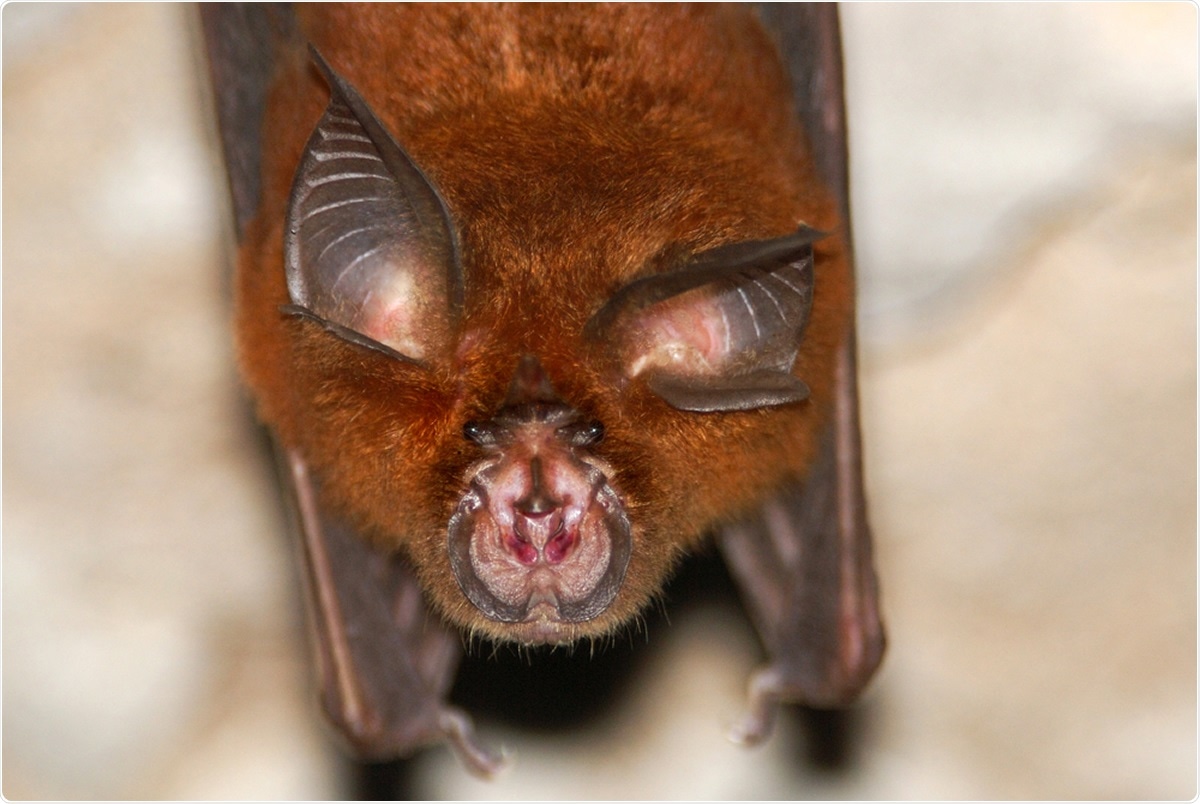Two new SARS-like coronaviruses described in Russian horseshoe bats
Horseshoe bats (Rhinolophus sp.) are known reservoirs of zoonotic coronaviruses (CoVs). Over the last twenty years, viruses thought to have originated from these bats have given rise to two severe acute respiratory syndrome (SARS) epidemic outbreaks in humans: SARS-CoV-1 in 2002/2003, which was limited mostly to Asia, and the currently globally circulating SARS-CoV-2, first identified in December 2019.

Several species of horseshoe bat are distributed across much of Eurasia and Northern Africa, and host a number of as yet unidentified SARS-like coronaviruses. As much of the world remains in the grip of the 2019 SARS-CoV-2 outbreak almost 18 months on, it is of great importance to identify and determine the prevalence of SARS-adjacent coronaviruses in horseshoe bat populations where future epidemics could arise from.
A group of Russian scientists, led by Dr. Sergey Alkhovsky of the Gamaleya Research Institute of Epidemiology and Microbiology, have identified two novel coronaviruses circulating in local Russian horseshoe bat populations. Their data provide critical insights into the genetic diversity of bat coronaviruses, as well as regional and temporal conditions that may encourage the spread of infection.
The preprint research paper is available to read on the bioRxiv* server.
The study
Alkhovsky and colleagues collected 120 oral (saliva and buccal cells) and 77 fecal samples from five species of horseshoe bats. Viral residue was isolated and separated from animal particles and studied using a ‘maximum likelihood’ phylogenetic analysis.
Two novel coronaviruses belonging to the Betacoronavirus genus of CoVs (like SARS-CoV-1 and -2) were identified, named BtCoV/Khosta-1/Rh/Russia/2020 and BtCoV/Khosta-2/Rh/Russia/2020 (Khosta-1 and Khosta-2, for short).
Further genetic analysis showed that genome organization of these two coronaviruses had the most significant similarity with two SARS-like coronaviruses identified in Bulgarian and Kenyan horseshoe bat in 2008 and 2007, respectively. Unlike SARS-like coronaviruses in eastern Asia, these coronaviruses lack ORF8, a non-structural protein present in SARS-CoVs 1 and 2.
Khosta-1 is most closely related to the Bulgarian 2008 CoV, but otherwise also showed high similarity with SARS-CoV-2 and other Chinese-originated CoVs. Interestingly, however, Khosta-1 structural proteins are more similar to those found in the Kenyan 2007 CoV.
Khosta-2 was found to be generally less similar to other bat CoVs than Khosta-1 is. It holds roughly the same degree of similarity to Khosta-1 as it does to previously identified bat CoVs.
Khosta-1 was found mostly in greater horseshoe bats from Kolokolnaya cave, while Khosta-2 was found at lower rates but more geographically and taxonomically spread.

Conclusions
Due to their lack of the ORF8 gene, these two novel viruses appear to be putting together an image of a “western” lineage of SARS-like coronaviruses, different from the “eastern” lineages containing SARS-CoV and SARS-CoV-2.
The difference in the distribution of the two viruses, the authors suspect, might be due to the high population density of the Kolokolnaya cave-residing bats, or due to seasonal changes in virality.
The genetic diversity of these viruses continues to increase beyond previously known. Due to rapid mutation and genetic exchange between viruses, there is a constant influx of new viruses likely to arise regularly within circulating bat populations.
These types of studies help identify strains that may become variants of concern in the future. As of yet, the diversity, prevalence, host range, and threat level to humans have yet to be established. But as future studies of greater sample sizes are continued, these factors are surely soon to be determined.
Important notice
bioRxiv publishes preliminary scientific reports that are not peer-reviewed and, therefore, should not be regarded as conclusive, guide clinical practice/health-related behavior, or treated as established information.
- Alkhovsky S., et al. SARS-like coronaviruses in horseshoe bats (Rhinolophus spp.) in Russia, 2020. bioRxiv, 2021, doi: https://doi.org/10.1101/2021.05.17.444362, https://www.biorxiv.org/content/10.1101/2021.05.17.444362v1
Posted in: Medical Science News | Medical Research News | Disease/Infection News
Tags: Coronavirus Disease COVID-19, Epidemiology, Gene, Genetic, Genome, Microbiology, Mutation, Protein, Research, Respiratory, SARS, SARS-CoV-2, Severe Acute Respiratory, Severe Acute Respiratory Syndrome, Structural Protein, Syndrome

Written by
Michael Burgess
Michael graduated with a first-class degree in Zoology from the University of Hull, and later received a Masters degree in Palaeobiology from the University of Bristol.
Source: Read Full Article


